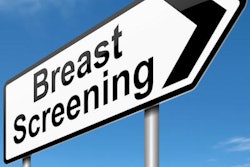
An independent review of the recent U.K. breast screening debacle has found that only 5,000 women actually missed invitations to screening appointments, down sharply from the 450,000 originally estimated. The review panel also noted that U.K. public health authorities initially overstated the magnitude of the problem, causing unnecessary anxiety among women.
In a report released on 13 December, an independent review panel explained the reasons behind the controversy, laying much of the blame behind a change made in 2013 in the program's specifications for the age at which women should be invited to their final screening. The change did not reflect how the program was being run in the field, and it led to a massive overestimation of the magnitude of the crisis by public health authorities at the time.
But the fact that far fewer women were affected by the mistake than originally estimated was cold comfort to the panel, which found a number of shortcomings behind how the national U.K. breast screening program is being run.
A growing crisis
The controversy began in May 2018, when Public Health England announced that nearly half a million women did not receive invitations to their final round of breast screening in the country's national screening program. Using an estimate based on computer models, U.K. Secretary of State for Health and Social Care Jeremy Hunt told Parliament that as many as 270 women may have died due to the error through cancers that might have been caught on mammography.
The initial investigation into the problem blamed it on a computer glitch, but as time went on the number of women believed to be affected was revised downward. Still, the crisis led to much soul-searching within the U.K. public health community and the launch of two investigative reports: one on the crisis itself and the second a broader review of breast screening within the National Health Service.
This week's report specifically focused on the crisis and the reasons for the oversight. It found that the problem was not due to a computer glitch, but rather was the result of a misunderstanding of the timing of invitations being sent to older women ages 70 to 71 for their final round of screening.
"In fact, the reason that the women were not invited between those ages is that the way the breast screening program had been run since the late 1980s meant they had already received their final screening three years earlier," the report authors wrote.
The crisis had led to a massive campaign to invite and screen women believed to have missed their final appointments, but the authors stated that this effort was probably unnecessary; in the end, probably only 5,000 women actually missed screening appointments.
Drilling deeper into the problem, the investigators found that the confusion resulted from a misunderstanding in documentation written in November 2013 that described how women should be invited to screening, which specified that women should be invited "within 36 months of their previous screening, until they reach the age of 71."
This statement was based on a misunderstanding of how the screening program was being run in the real world, the review found. Also, the specifications of the 2013 guidelines were incorrectly applied to women screened before that date, which also artificially inflated the number of women believed to have been affected.
"In short, there was no incident and ministers were incorrectly advised. The advice to contact women to tell them that they may have missed a final screening, and to offer another, was based on a laudable desire to correct a mistake and ensure that women were safe," the report authors noted. "We believe the Health Secretary made the right decision, based on the advice he was given. However, we believe that in the rush to announce and correct the issue, assumptions were made about policy and operations which were not sufficiently challenged."
While it's good news that the number of affected women was revised so sharply downward, the report authors advised that the U.K. breast screening program "now needs a reset." The three organizations that run the program should all agree on a definition of the ages at which women should be invited to screening, and the IT systems behind the program should be aligned with these standards to ensure that "the right women are being invited to screening at the right time."
The reason why 5,000 women did not receive invitations when they should have was due to manual errors in using "unwieldy IT systems," the review found, as well as a misalignment between a computer algorithm and the way women were being invited to screenings. This should be corrected.
The investigators acknowledged the debate over the effectiveness of breast cancer screening, in particular the most appropriate age at which women should be invited to mammography. That discussion is beyond the report's purview, they noted, which instead focuses on proper policy, governance, and operation of the program.
"The program can only achieve its objective of reducing mortality from breast cancer if it is properly administered," they wrote.



















